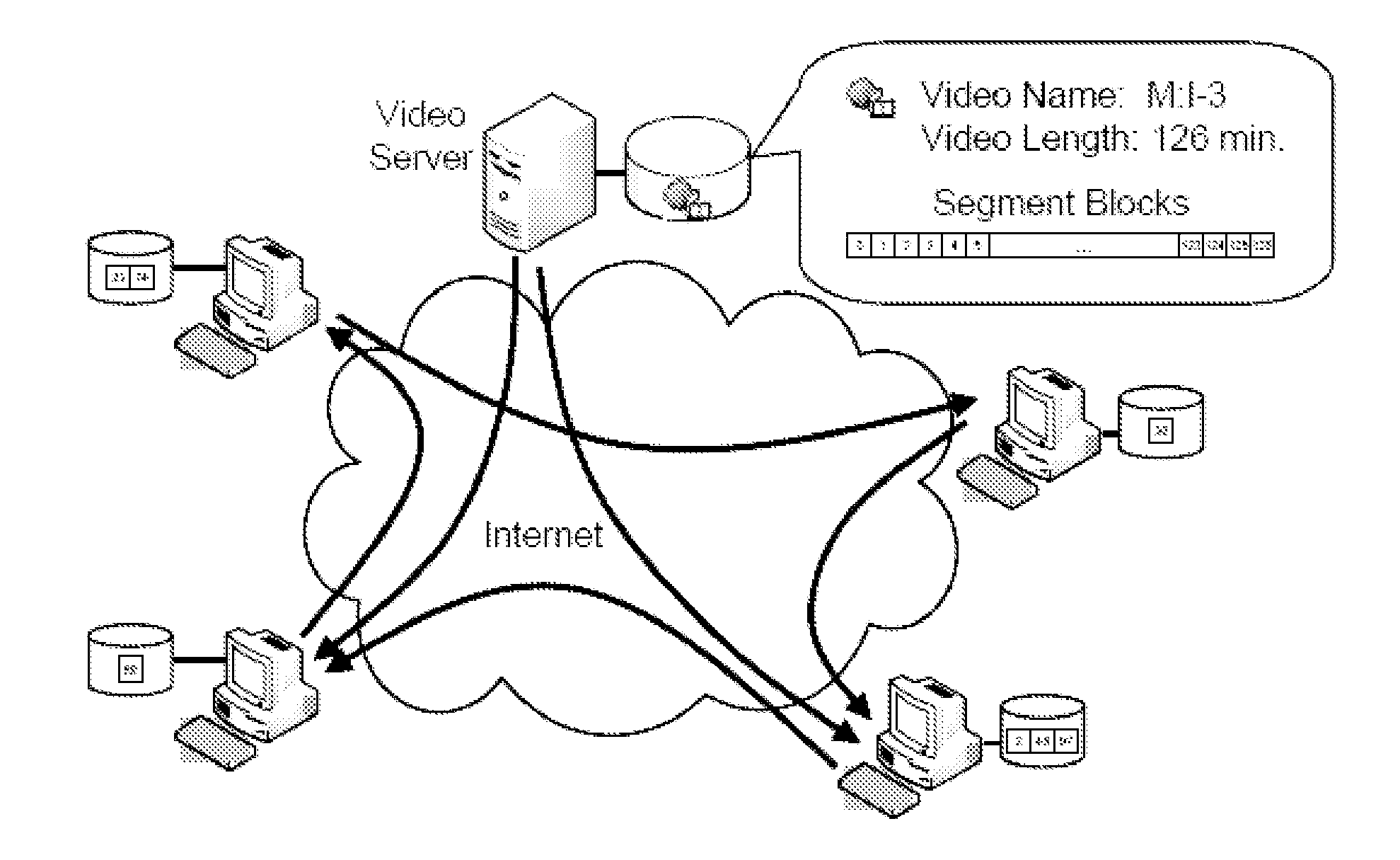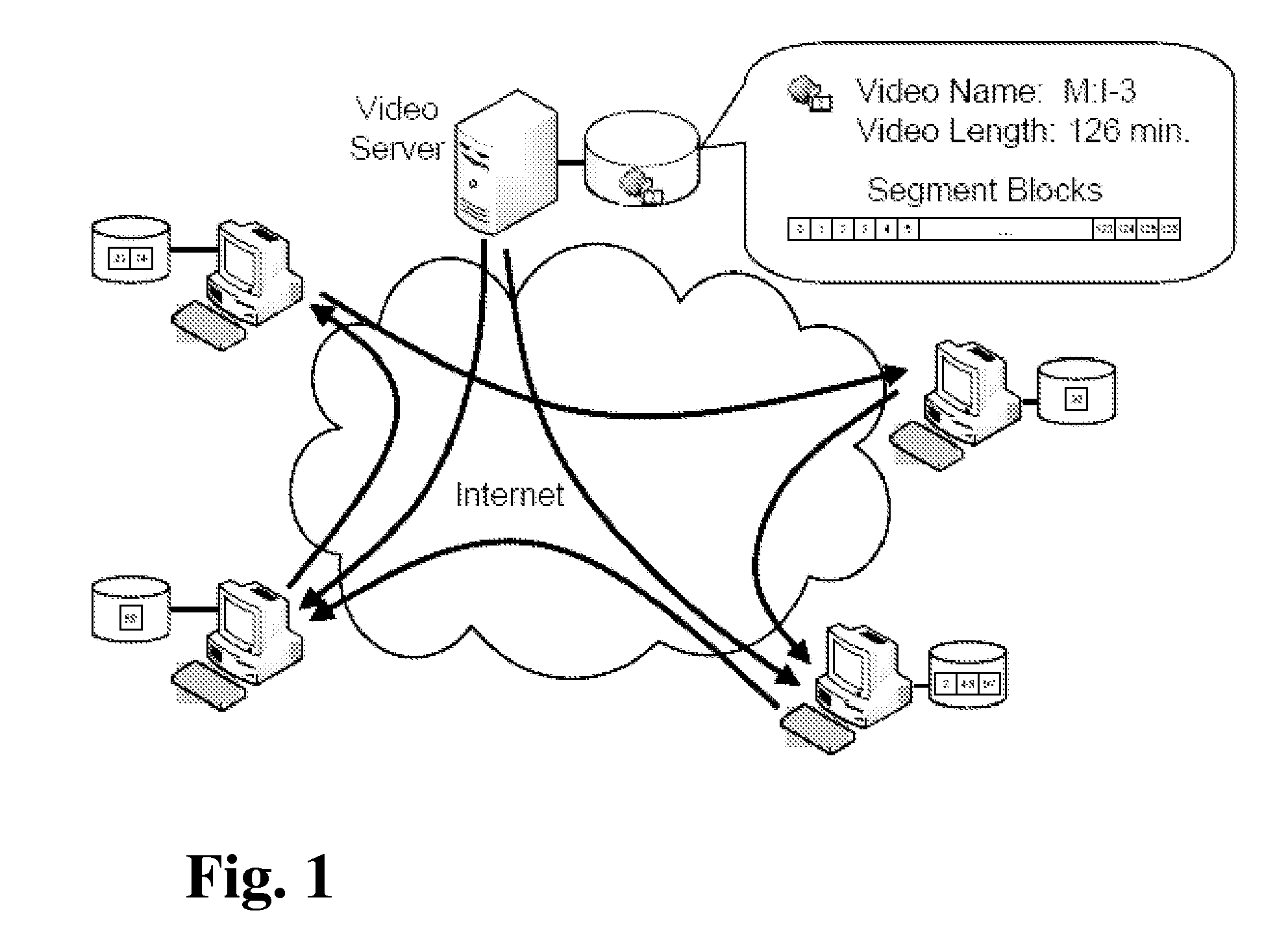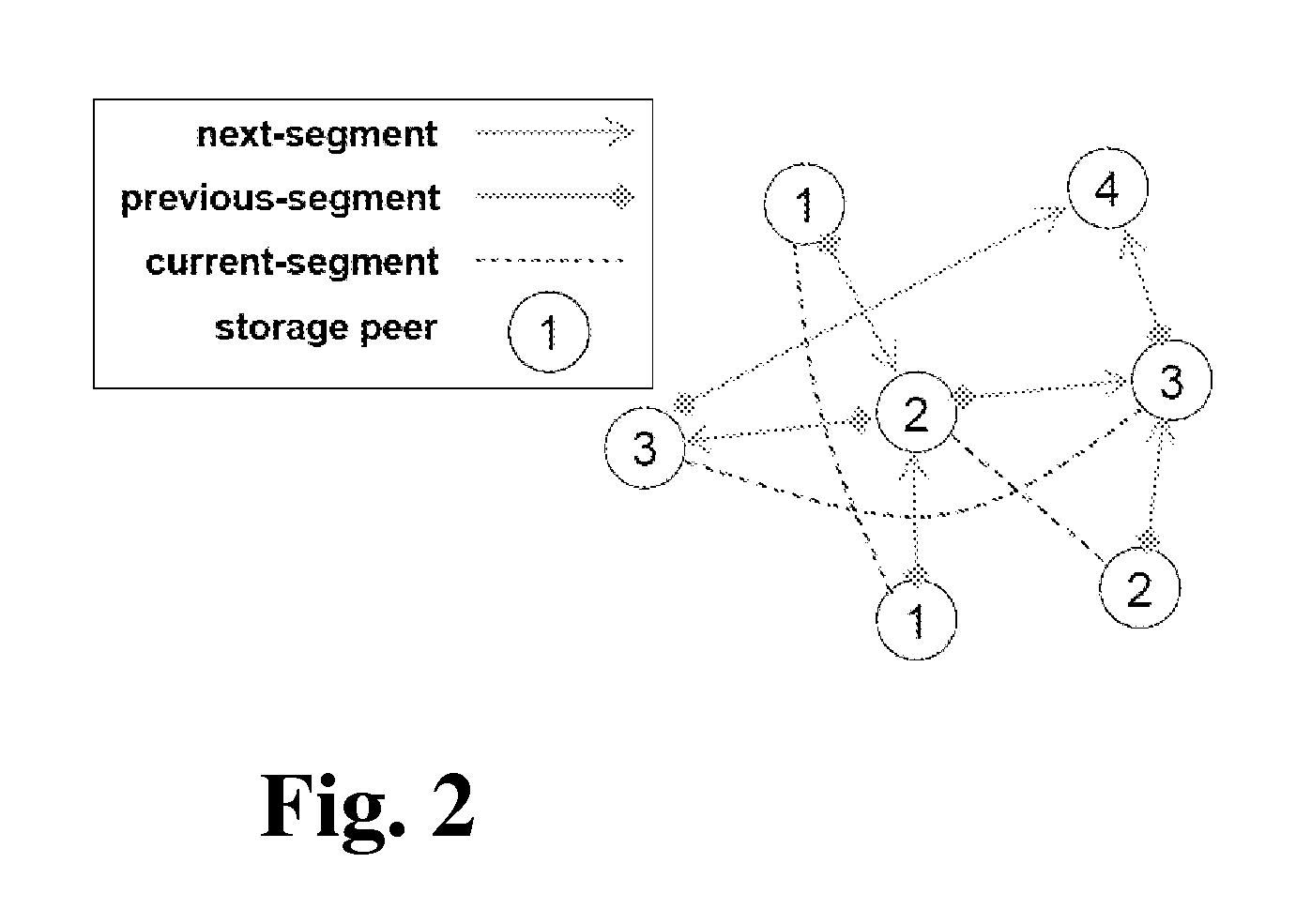Distributed storage to support user interactivity in peer-to-peer video streaming
a peer-to-peer video and storage technology, applied in the field of video on demand, can solve the problems of not being able to scale to a large number of clients, providing such services is still difficult, and providing vod with a traditional client-server model, etc., and achieves efficient data dissemination, low startup delay, and long startup delay for playback
- Summary
- Abstract
- Description
- Claims
- Application Information
AI Technical Summary
Benefits of technology
Problems solved by technology
Method used
Image
Examples
Embodiment Construction
[0037]The numerous innovative teachings of the present application will be described with particular reference to the presently preferred embodiment (by way of example, and not of limitation).
[0038]In an exemplary embodiment, the present innovations, called VMesh, are used to support interactive VoD service. In such embodiments, VMesh utilizes the large total storage capacity of peers to improve the supply of video segments so as to support the large interactive demand in a scalable manner. FIG. 1 depicts the concept of one example implementation. In this example of VMesh, videos are preferably divided into smaller segments (identified by segment IDs, for example) and stored in peers distributed over the network. An overlay mesh is built upon peers to support playback and interactive functionalities during playback. In this example, a peer may store one or more video segments in its local storage. It preferably keeps a list of the peers who have the previous and the next video segme...
PUM
 Login to View More
Login to View More Abstract
Description
Claims
Application Information
 Login to View More
Login to View More - R&D
- Intellectual Property
- Life Sciences
- Materials
- Tech Scout
- Unparalleled Data Quality
- Higher Quality Content
- 60% Fewer Hallucinations
Browse by: Latest US Patents, China's latest patents, Technical Efficacy Thesaurus, Application Domain, Technology Topic, Popular Technical Reports.
© 2025 PatSnap. All rights reserved.Legal|Privacy policy|Modern Slavery Act Transparency Statement|Sitemap|About US| Contact US: help@patsnap.com



